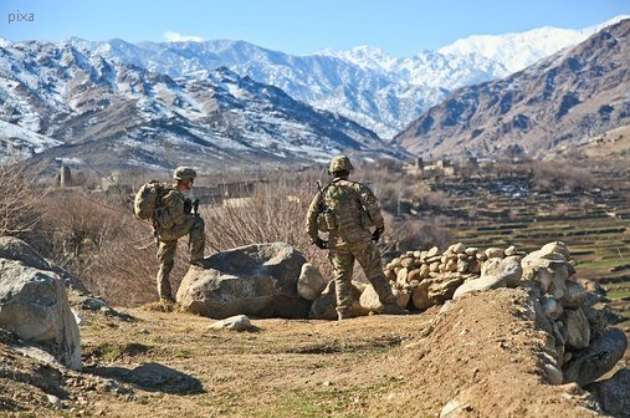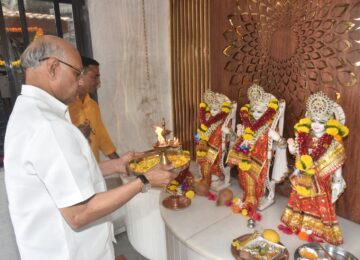Anupama Nair
www.mediaeyenews.com
The 15th of January every year is celebrated in India, as Army Day to celebrate the taking over of Lieutenant General K.M. Cariappa as the first commander-in-chief of the Indian Army from General Sir Francis Butcher, who was the last British commander-in-chief of India in 1949. After India became a Republic on January 26 1950, all Indian Army officers of the King's Commission were recommissioned and appointed with their previous ranks. I thought of writing about the history of the Indian army
The question is did the Indian Army exist only after 1949? The answer would be no as Indian army existed from the time of Ramayana and Mahabharata, more than ten thousand years ago. Ramayana and Mahabharata is the start of the fundamental framework around which the edifice of Indian Army is built. In Mahabharata, the Kurukshetra War has left indelible footprints on the Indian spirit. “Fought relentlessly for eighteen days in the quest for peace, the force level states 18 ‘Akshaunis’, seven with the ‘Pandavas’ and eleven with the ‘Kauravas’, amounting to nearly 400,000 assorted troops fighting on chariots, horses, elephants and foot soldiers”.
Though innumerable wars have been fought after that, most were in pursuit of universal peace and ‘dharma’. Recourse to arms was only taken when peace or Dharma was threatened. In fact, the word dharma exists in the very core of Indian philosophy, that can be most aptly traced back to the ‘Yajurveda’ which states “may the sky be peaceful, may the atmosphere be peaceful, may the earth be peaceful, may eternal peace cometh upon us”.
The Indus Valley Civilization or the world’s first Urban Civilization were in the banks of river Indus from 3200 to 2700 BC. However, the Indus Valley Civilization’s two urban centers at Mohenjo-Daro and Harappa gradually declined in the second millennium BC, and almost completely disintegrated around 1500 BC due to ecological reasons like drying up of rivers and drought. The coastal cities disintegrated due to massive floods.
Due to the gradual extinction of such civilizations, the north-western invasion route through the Hindu Kush Mountains remained unguarded for centuries, and gradually many people and tribes managed to cross over for a better life.
There are many recent reports countering the invasion of Indo-European people, or Aryans, who settled in the Indian Sub-Continent as a whole, and the military history of India dates back to 6th Century BC, i.e., the period when some of the more aggressive forces like the Persians, Greeks, the Turks, Huns, Mongols and so on crossed over into the more fertile and alluvial plains of India by the north-western route. Even though not much details are available of the early conflicts between the invaders and our forces, we do have evidence that shows that some of the invaders did manage to win many wars. However, their journey to Southern India was stopped by the Vindhya Mountains. The other major thing to be considered for a war in India was and still continues to be is the climate – hot summers, incessant monsoon rains between June and September also rendered movement of armies impossible. The best season for campaigning was always October and November, when the weather was pleasant.
The first Turkish conqueror was Mahmud of Gazni (997-1030) who invaded India seventeen times. After him, Ghori invaded India In 1190 having advanced to Tarain near Delhi, his outnumbered Army was defeated by King Prithvi Raj Chauhan. Prithvi Raj unfortunately did not follow up on the victory and, after eighteen months Ghori was able to conquer the northern plains of India, thus establishing the Delhi Sultanate. The long period of anarchy following the invasion and plunder of northern India by Taimur, the cruelest man in 1392 AD, who massacred nearly 5 lakh Hindus in Delhi.
Taimur’s victory inspired the attention of Babur, a king of Kabul who attacked India with his Mughal Army in 1525. He defeated the Sultan of Delhi, Lodi at Panipat and was the first to use canons in Indian warfare. Babur’s dominions extended from Afghanistan to the frontiers of Bengal, and from the Himalayas to Gwalior in Central India. He laid the foundation of the Mughal Empire that was to be consolidated by this grandson – Akbar. Thankfully the rule of the barbaric Mughals ended in 1857.
The birth of the modern Indian Army as we know today, goes back to the early sixteenth century when the Europeans (French, Dutch, Portuguese and British), came to India to do trade. In 1600 AD the East India Company was formed to coordinate all British trading activities. The Royal Charter of East India Company was, ostensibly, to trade with India. To the British, “India was a vast and unending source of fabulous treasures, and encouraged the Company to enlarge and diversify its operations while tightening its stranglehold on a tottering and decadent Mughal Empire.
During the second half of the seventeenth century, the Mughal Empire declined rapidly. The Marathas under Shivaji rose against the kingdom of Bijapur and established an independent principality there. In all his operations Shivaji upheld the Hindu chivalric tradition in his treatment of defeated soldiers and non-combatants. By the end of the century there were four major powers: the Marathas, the Afghan Empire under Ahmed Shah, the French and the British, all competing to take over the nearly extinct Mughal Empire.
I cannot cover the entire history of our army in a single article. I will be writing about the role of the army till Independence and till date.
(Dedicated to the website of Indian Army archives, and numerous recollections of friends in the army)




























